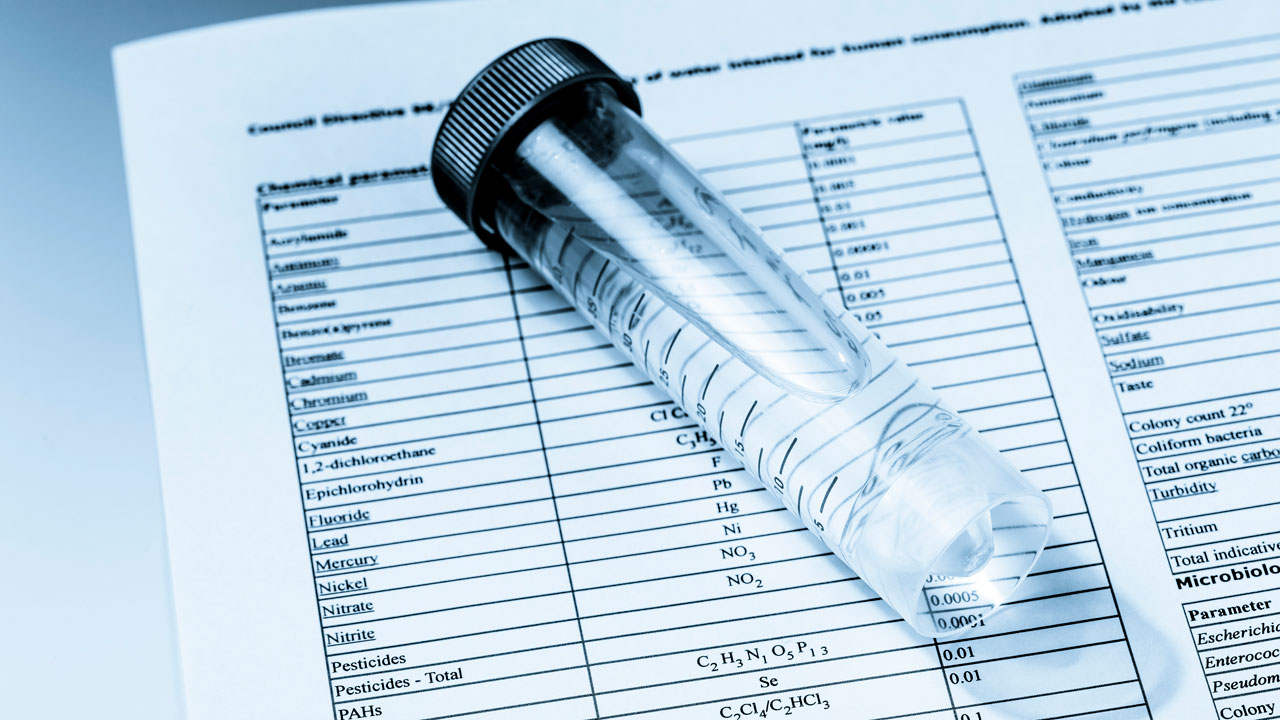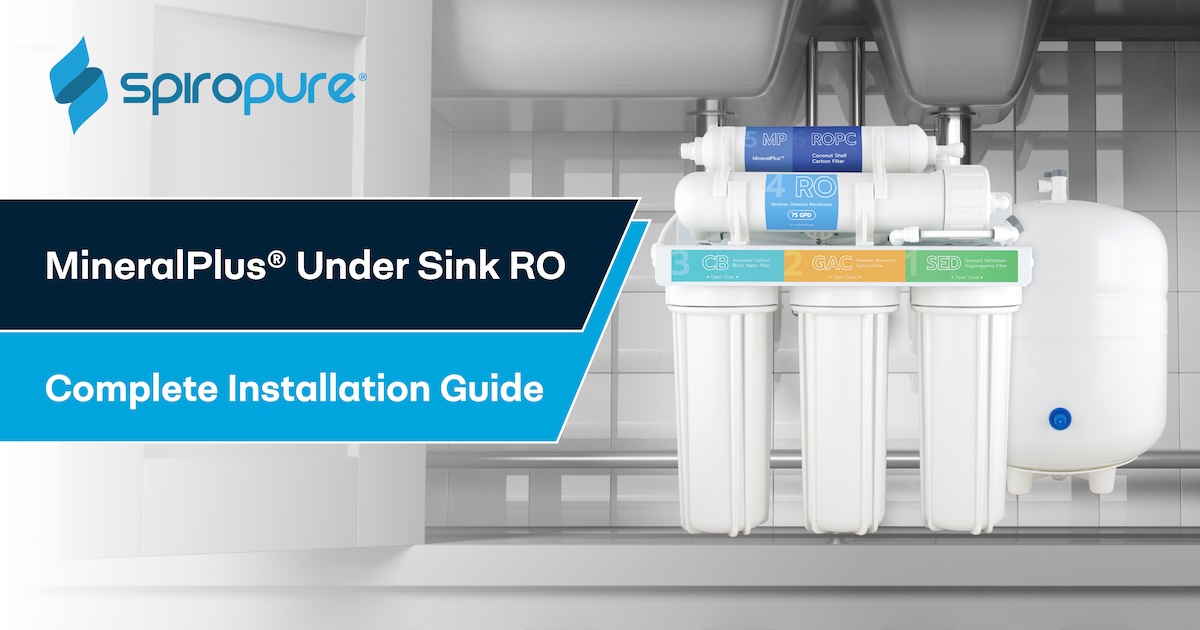Microplastics to PFAS in Drinking Water: Know Your Emerging Contaminants
 Andrew
November 26, 2025
#carbonfilter
#emergingcontaminants
#foreverchemicals
#microplastics
#PFAS
#reverseosmosis
Andrew
November 26, 2025
#carbonfilter
#emergingcontaminants
#foreverchemicals
#microplastics
#PFAS
#reverseosmosis

- PFAS "forever chemicals" and microplastics are now widespread in drinking water, with PFAS detected in 99% of Americans' blood and microplastics found in 94% of US tap water samples.
- These emerging contaminants pose serious health risks—PFAS are linked to cancer, immune suppression, and liver damage, while microplastics can carry toxins and accumulate in body tissues.
- Traditional water treatment facilities weren't designed to remove these modern synthetic compounds, leaving households responsible for their own protection through targeted filtration.
- Reverse osmosis systems provide the most comprehensive residential solution, removing 85-95% of PFAS and virtually all microplastics through semi-permeable membrane technology.
PFAS: The Original Forever Chemicals
Per- and polyfluoroalkyl substances (PFAS) represent a class of over 5,000 synthetic chemicals that have been in use since the 1940s. It all started with the accidental discovery of a synthetic, low-friction substance called Polytetrafluoroethylene, which consumers know as Teflon. They were celebrated for their industry transformative properties, including resistance to heat, water, grease, and stains. As a result, PFAS became integral to a wide range of products including Teflon cookware, firefighting foam, semiconductors, waterproof clothing, and food packaging. In fact, their use in medical devices, microprocessors, batteries, and renewable energy mean they remain in wide use, even as researchers work to develop safer alternatives or mitigation technology.
The very properties that make PFAS so unique also make them virtually indestructible in the environment, earning them the nickname "forever chemicals." Recently, there has been a lot of new coverage of forever chemicals in drinking water.
The most studied PFAS compounds, PFOA (perfluorooctanoic acid) and PFOS (perfluorooctane sulfonate), have been linked to serious health concerns including immune system suppression, increased cancer risk, liver damage, and reproductive issues. What makes PFAS particularly troubling is their bioaccumulation. They build up in our bodies faster than they can be eliminated, with the Centers for Disease Control detecting PFAS in the blood of 99% of Americans tested. That fact is likely thanks to exposure via the food we eat, water we drink, or air we breathe, according to the National Institute of Environmental Health Sciences.
Microplastics: An Invisible Invasion
Microplastics are tiny plastic fragments smaller than 5 millimeters that result from the breakdown of larger plastic items and the shedding of synthetic materials. Unlike PFAS, which are intentionally manufactured chemicals, microplastics are largely the unintended consequence of our plastic-dependent society. Every time synthetic clothing like polyester and nylon goes through the washing machine, microfibers are released. When plastic bottles and bags degrade in the environment, they create countless microscopic particles.
These particles are now ubiquitous in drinking water sources. Studies have found microplastics in 94% of tap water samples in the United States, and bottled water often contains even higher concentrations, up to 10,000 particles per liter. Microplastics can absolutely reach groundwater and enter wells via surface runoff, soil contamination, and aquifer recharge, eventually seeping into the supply. The same is true of PFAS and other emerging contaminants.

The Broader Landscape of Emerging Contaminants
PFAS and microplastics represent just the tip of the iceberg when it comes to emerging water contaminants. Pharmaceutical residues from antibiotics and hormones, the synthetic chemical called 1,4-dioxane from industrial solvents, and nanoplastics (even smaller than microplastics) are increasingly detected in water supplies. The challenge is that traditional water treatment facilities were designed to remove conventional contaminants like bacteria and chlorine, not these modern synthetic compounds.
As manufacturing continues to develop new chemical formulations and plastic alternatives, we can expect additional emerging contaminants to enter our water systems. This reality underscores the importance of comprehensive, adaptable filtration solutions for individual households.
Start with Your Water Report
The first step in protecting your family is understanding what's actually in your water. If you receive municipal water, request your annual Consumer Confidence Report (also called a Water Quality Report) from your utility. These reports are often easily found online. While these reports may not yet test for all emerging contaminants, they provide baseline information about your water source and any detected PFAS levels.
Well water users face additional challenges since private wells aren't subject to public monitoring. If you rely on well water, consider comprehensive testing through a certified laboratory, including specific PFAS analysis. Well owners should test annually regardless of contamination concerns, as groundwater conditions can change due to industrial activities, agricultural runoff, or infrastructure changes in your area.
Understanding the Testing Landscape
It's important to recognize that testing capabilities for emerging contaminants are still evolving. Many water utilities are just beginning to monitor for PFAS following new Environmental Protection Agency regulations, and standardized testing for microplastics doesn't yet exist for consumers. This uncertainty is precisely why a comprehensive filtration approach makes sense if there is any question about the quality of water entering the home. Homeowners can prepare for both known and unknown contaminants.

Reverse Osmosis: The Most Comprehensive Solution
For households concerned about removing emerging contaminants from water, reverse osmosis (RO) systems stand out as the most effective residential treatment option. RO systems use water pressure and a semi-permeable membrane to remove 85–95% of PFAS compounds and virtually all microplastics. Depending on water quality and operating conditions, some RO systems can remove a higher percentage of PFAS as well. Unlike simple carbon filters, which have more limited effectiveness against PFAS, RO systems provide broad-spectrum protection against hundreds of potential contaminants.
Point-of-use RO systems installed under your kitchen sink typically cost $150–300 initially, with replacement filters needed every 6–12 months. Modern systems with booster pumps offer improved flow rates, making them practical for cooking and drinking water needs. While whole-house RO systems exist, they're typically unnecessary and cost-prohibitive for addressing consumption-related contamination concerns.
Alternative and Supplementary Filtration
Specialty activated carbon filters designed specifically for PFAS reduction can provide meaningful protection and catalytic carbon in some conditions and systems can be highly effective, but alone they're less comprehensive than RO systems. Some countertop and pitcher filters now carry NSF certifications for PFAS reduction, offering accessible options for renters or those preferring simpler installations. Read more about in our article "Best Water Filters to Remove PFAS."
For microplastics specifically, membrane-based filters with pore sizes smaller than 1 micron will be more effective. However, many refrigerator and basic pitcher filters aren't fine enough to capture the smallest microplastic particles, so it's crucial to verify specific certifications rather than assuming all filters provide equivalent protection.

Above and Beyond
While home filtration provides immediate protection, consider broader steps to support community-wide solutions. Engage with your local water utility about their plans for addressing emerging contaminants. Some are actively working toward compliance with new regulations but may need time to implement appropriate treatment technologies.
Supporting legislation for stronger chemical regulations and advocating for improved manufacturing standards can help address contamination at its source. Simple lifestyle changes like reducing single-use plastics, choosing PFAS-free products when possible, and properly disposing of household chemicals also contribute to reducing environmental contamination.
The presence of forever chemicals and emerging contaminants in our water supply represents a significant challenge, but it's not insurmountable. By understanding the risks, testing your water supply, and implementing appropriate filtration technologies, you can ensure your family has access to clean, safe drinking water while supporting broader efforts to protect our shared resources.






